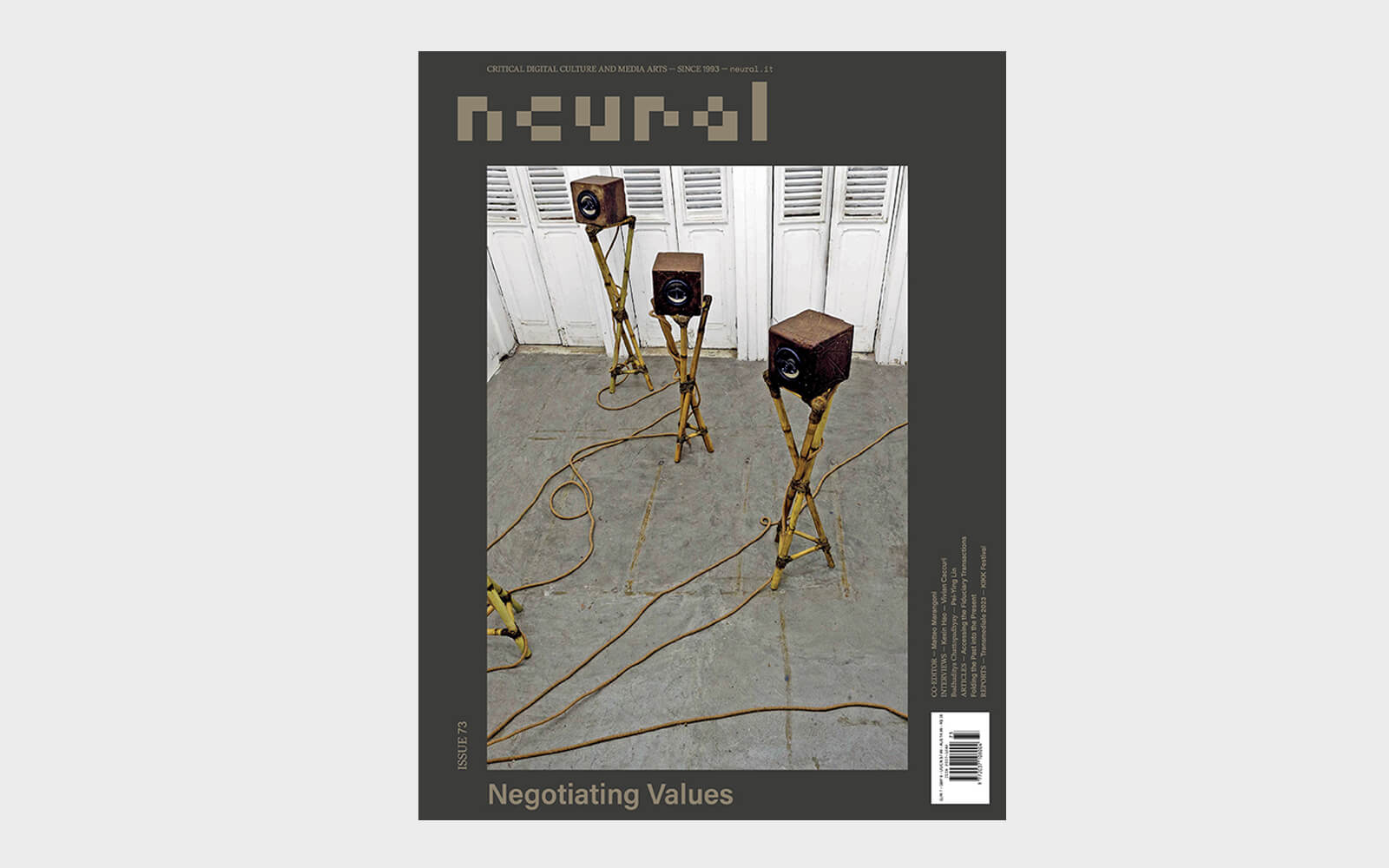All
Frustrated with the state of today’s social media platforms and how they extract attention (“I feel trapped!”), German graphic designer and creative coding enthusiast Tim Rodenbröker launches a radical alternative: 128kb Challenge is a distraction-free, community-first feed for discovering and sharing minimalist programmed works. Anyone working in Processing, p5.js, or GLSL can participate by submitting GIFs that adhere to the 128×128 pixels, 128 colours, and 128 kilobyte size limit.
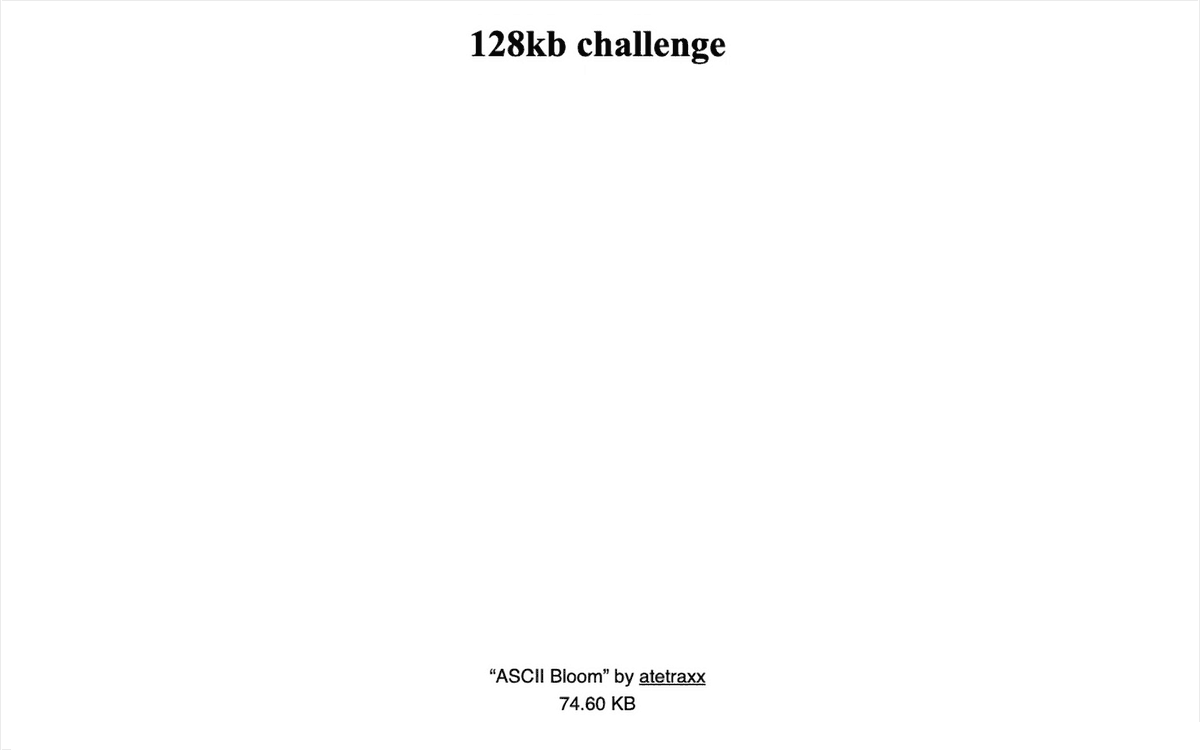
Mimi Ọnụọha Explores the Politics of Absence
“I’m looking not only at what is unquantifiable or missing, but at what is unknowable. Knowledge doesn’t simply come to you; it also involves what you yourself and the space you’re in will allow you to know.”
Rachel O’Dwyer Parses the “Cruel Optimism” of Crypto
“If the tale of hard work and upward mobility kept us yoked to our employers and our 9-to-5 jobs, the fantasy of the YOLO investment ‘Lambos or food stamps!’ keeps its subjects attached to the market. To risking it all.”
A timely showcase of early computer drawing and painting in the age of generative AI, “Harold Cohen: AARON” opens at New York’s Whitney Museum. Curated by Christiane Paul, it honours Cohen’s pioneering 1970s and ’80s process, with recreations of his plotters running live in-gallery (each operating different versions of the AARON software) alongside key works. “Cohen used to joke that he would be the only artist ever who posthumously makes work,” says Paul of the late artist’s enduring prescience.
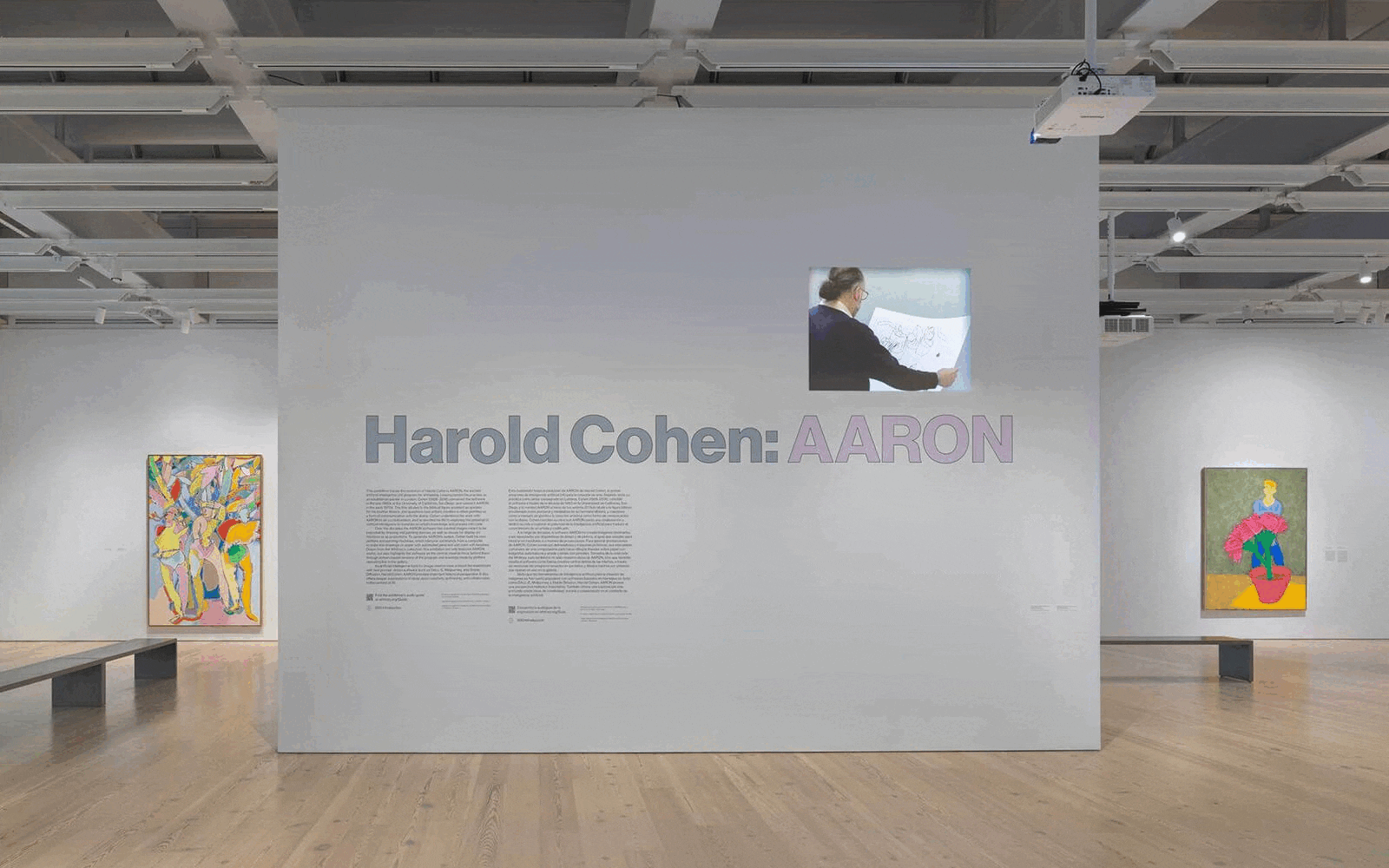
Haha Real, a very site-specific installation by Rachel Rossin, opens at Buffalo Bayou Park Cistern in Houston. Illuminating a path through the subterranean reservoir with LED panels, the American artist draws on eclectic sources including The Velveteen Rabbit (a 1922 children’s book) and “The Creative Act” (a 1957 Marcel Duchamp lecture). Musician frewuhn contributes a score to set the mood for the 400 m journey, which culminates in a “cascade of uncanny sunsets within the darkness.”
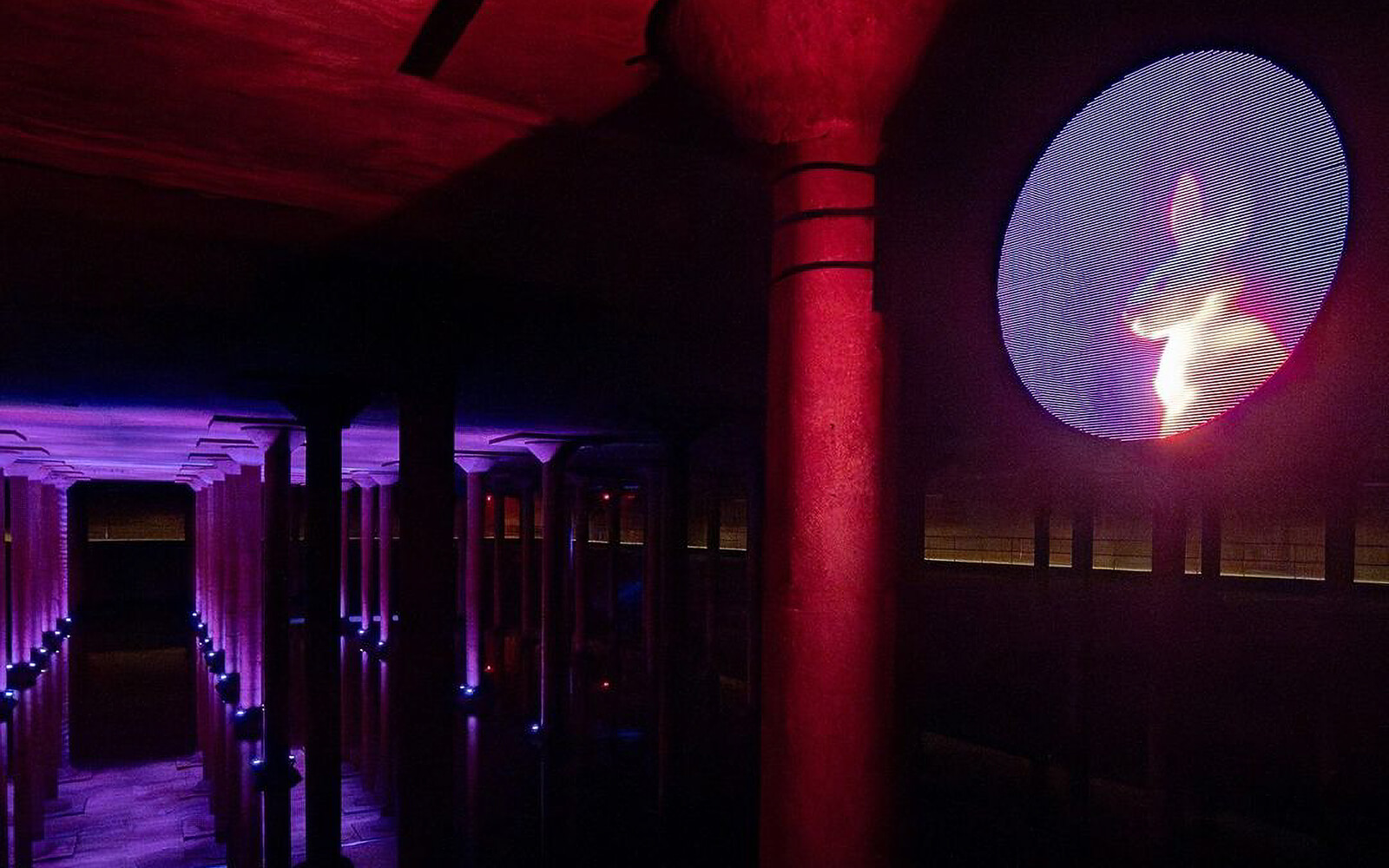
VR Pioneer Jaron Lanier Reflects on Eccentric Headsets of Early Days
“I’d build one-of-a-kind VR headsets into big masks from different cultures, sometimes adding lightning bolts and feathers. I wanted the headsets to be vibrant, exciting objects that enriched the real world, too.”
With “My Veins Are the Wires, My Body Is Your Keyboard,” New York’s Museum of the Moving Image (MoMI) opens the first major survey of pioneering net artist and sculptor Auriea Harvey. Featuring more than 40 works spanning early net-based interactives, videogames (created with Michaël Samyn under the Tale of Tales moniker), mixed media and AR sculptures, curator Regina Harsanyi celebrates Harvey’s capacity to “reflect the paradoxical power of computers to enable intimacy” over nearly four decades.
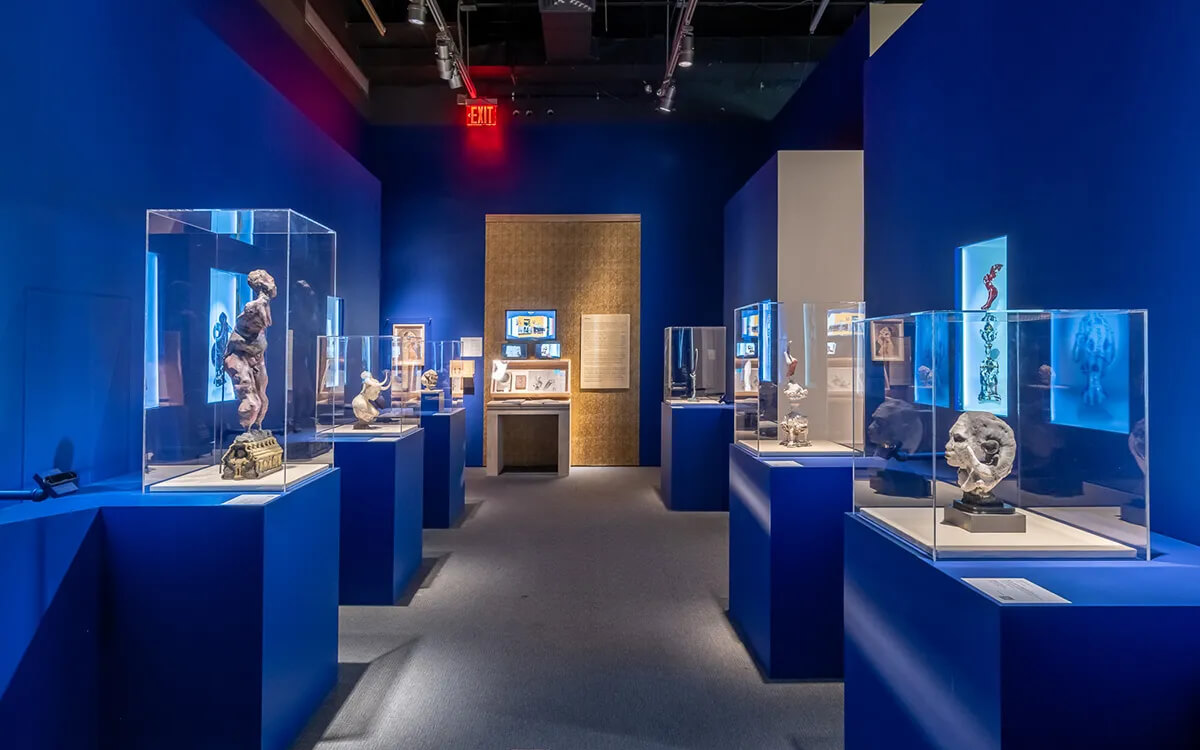
Yuk Hui (ed)
Cybernetics for the 21st Century
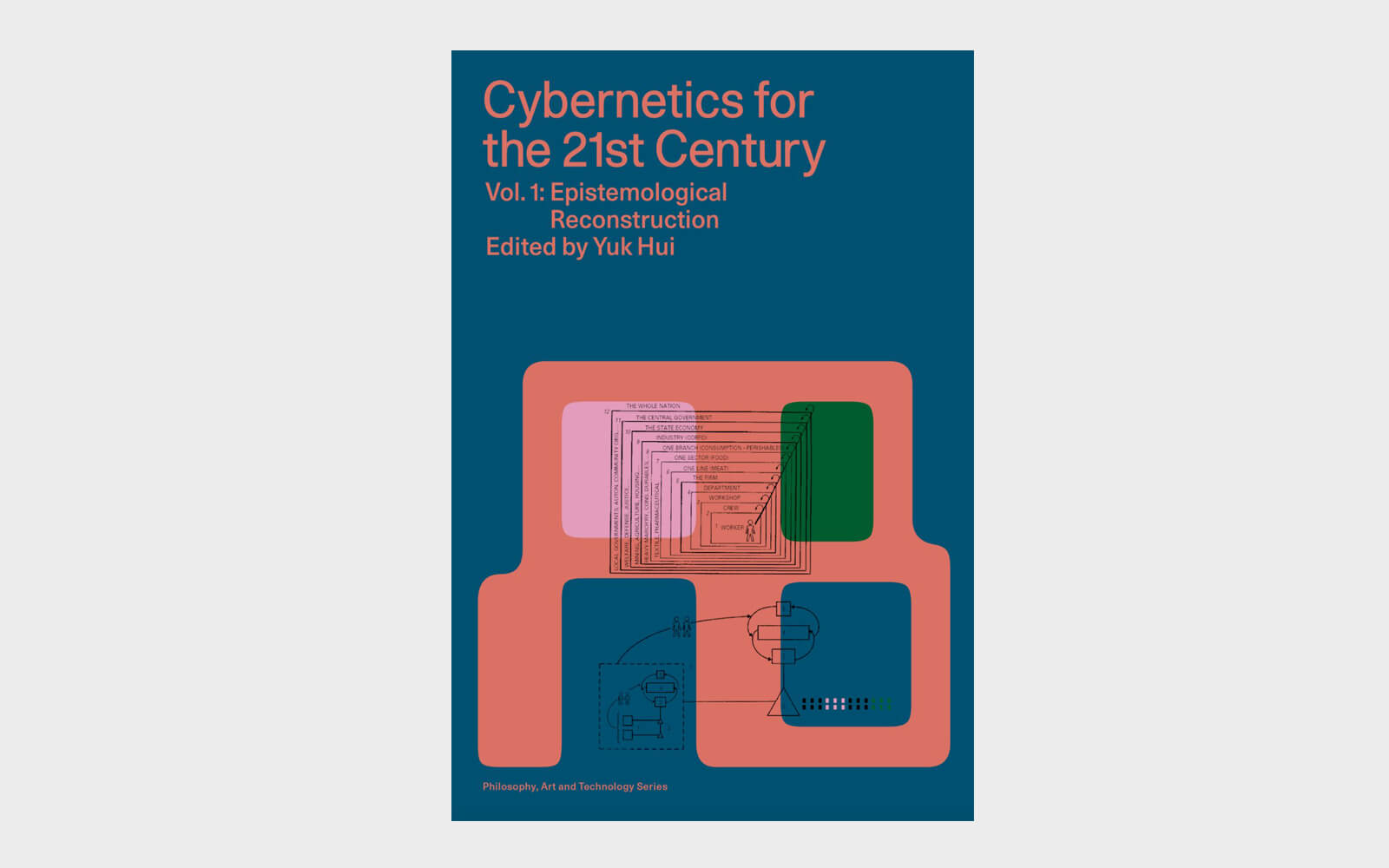
January 2024
January 2024
Journalist Mourns Passing of Social Network Formerly Known as Twitter
“At its best, it tapped into creativity and wit that had lain dormant in the population, showcasing talents that didn’t previously exist because there had been no form or shape for them to take. Live snark became an art.”
“Hello, Human!” opens at MoCA Taipei, showcasing works by 16 artists and collectives including Morehshin Allahyari, Blast Theory, Mario Klingemann, Daito Manabe, Lev Manovich, onformative, Anna Ridler, and Winnie Soon that anticipate “the moment AI finally breaks through the black box and snarls at humanity.” In Dimension Plus’ (Keith Lam & Escher Tsai) post-humanity arcade machine VS AI Street Fighting (2023, image), for example, two AIs compete in endless content generation and reasoning sessions.

“Decoding the Black Box” opens at Galerie Stadt Sindelfingen, Germany, exposing the corporate surveillance systems that invade the private sphere. 14 artists and collectives including Aram Bartholl (image: Are you human?, 2017), James Bridle, Adam Harvey, Femke Herregraven, Jonas Lund, !Mediengruppe Bitnik, Metahaven, and Mimi Ọnụọha make transparent the capitalist power structures of the internet and virtual image economy with evocative counter-narratives and provocations.

McKenzie Wark Describes Masculinity as an Ill-Fitting Suit
“I was cosplaying masculinity for years, sometimes pretty well frankly, but the suit literally never fit. So that gives you a different way of thinking, like what’s a better fiction? This is not my true self. This is a better fiction that I would so much rather play.”
LaTurbo Avedon’s “Trust Your Technolust” opens at panke.gallery, marking the avatar artist’s first solo exhibition in Berlin. Examining “the wavering promises of virtual worlds” through AR sculptures and projection, Avedon presents past and present works from Club Rothko (2012-), a “virtual nightclub rendered at the end of the metaverse.” Meanwhile, IRL clubbers get to exlore Avedon’s site-specific AR sculpture Sky Queue (2024) while waiting outside of Berlin’s Tresor.
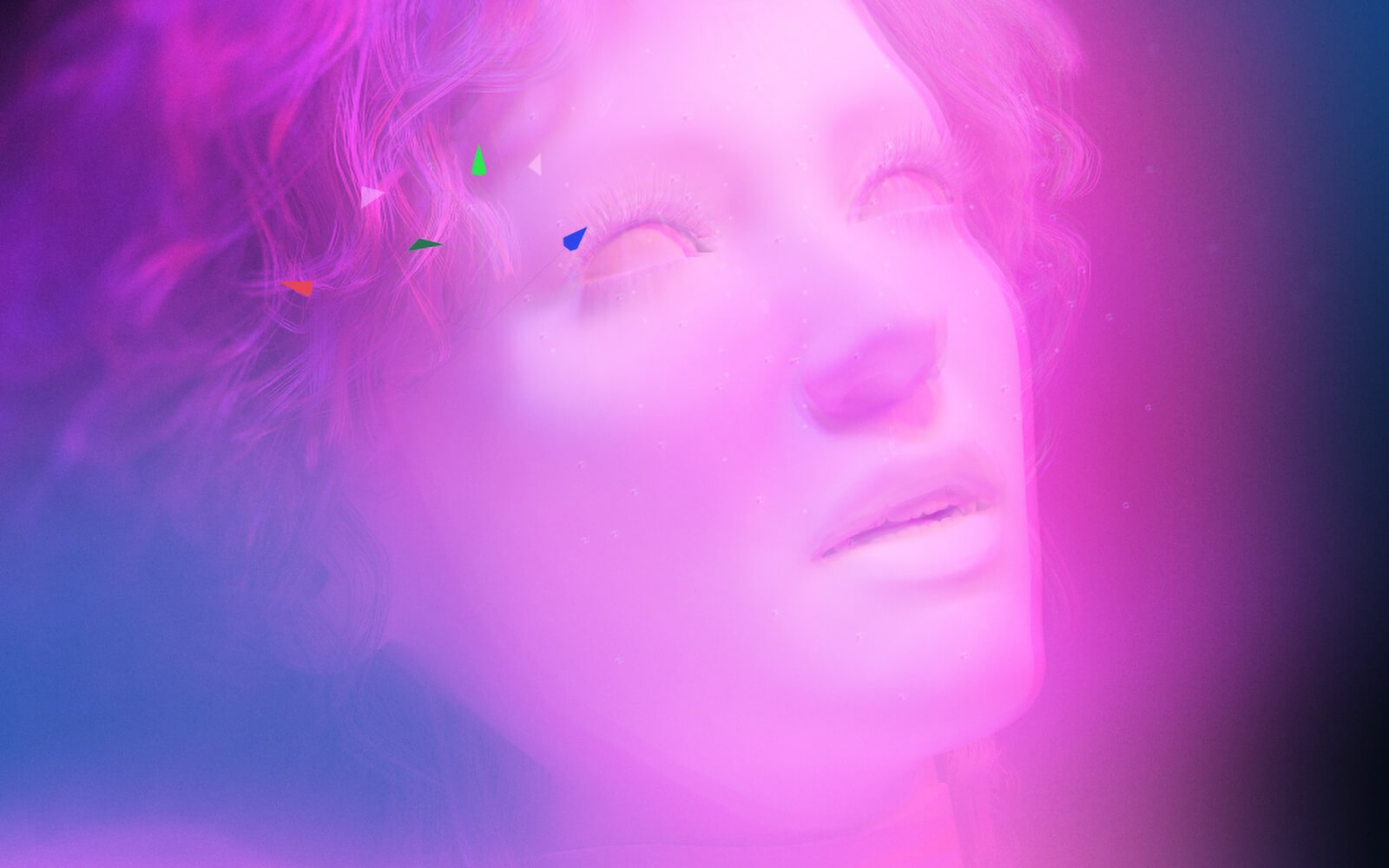
Nóra Ó Murchú Discusses Transmediale 2024 and the Horrors of Content
“For me, it encapsulates the ways we’ve come round to performing and selling ourselves online. How we’re urged to almost embody capitalism!”
Off-Grid Internet Land Art: Andrew Benson Ponders Platform Escapism
“Creating a single artwork on a small website at this point is a kind of Land Art. To view it you have to leave the urban centers of the feed and go to some off-grid locale. Nobody is coming to visit, but everyone says they want to.”
Georgina Voss
Systems Ultra
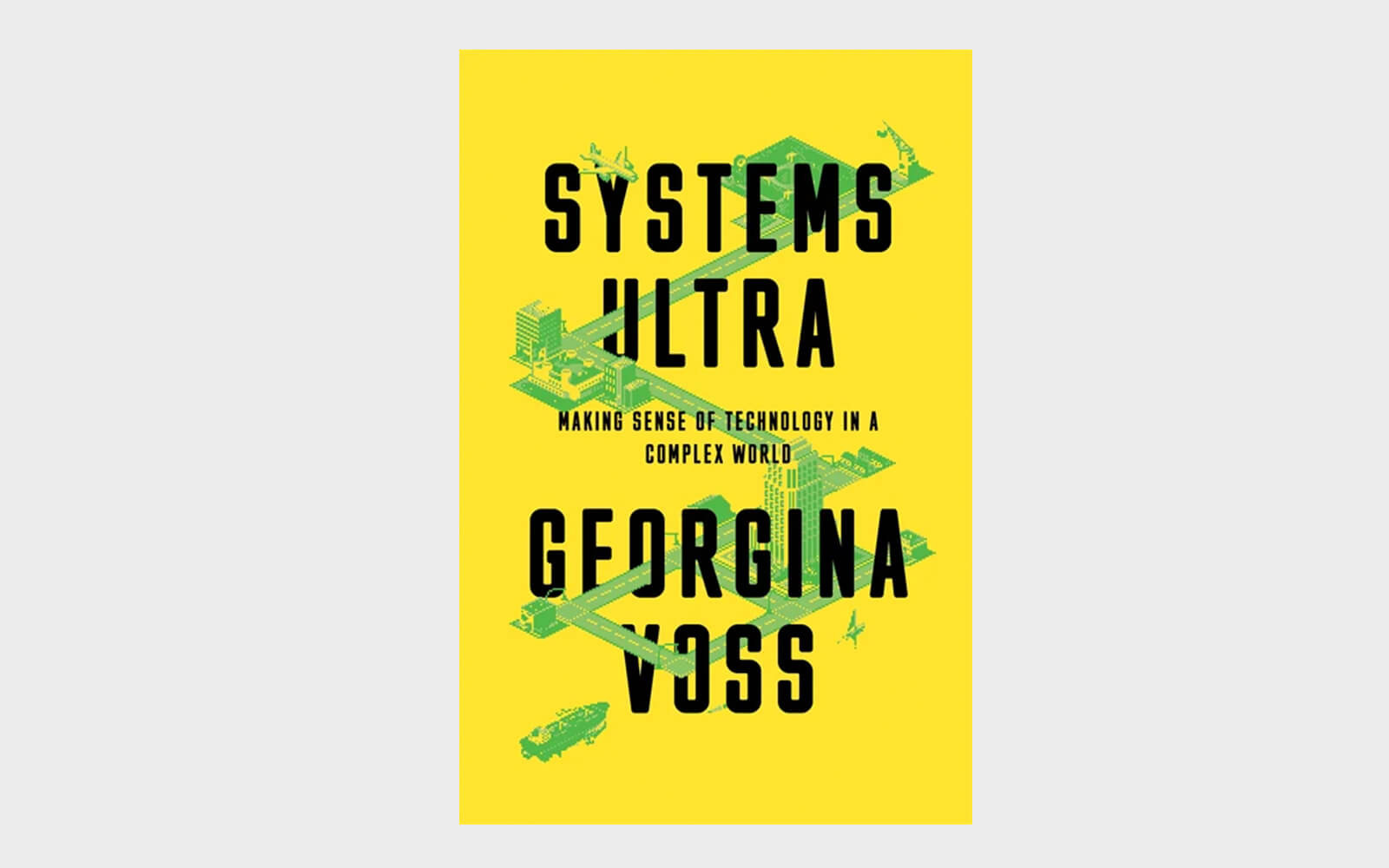
Beware the AGI Patina of Quasi-Religious Symbolism
“Be very wary of profit-driven corporations using the AGI patina of mysticism to market centralized tech always ultimately developed in service of growth.”
Neural 73
Negotiating Values
